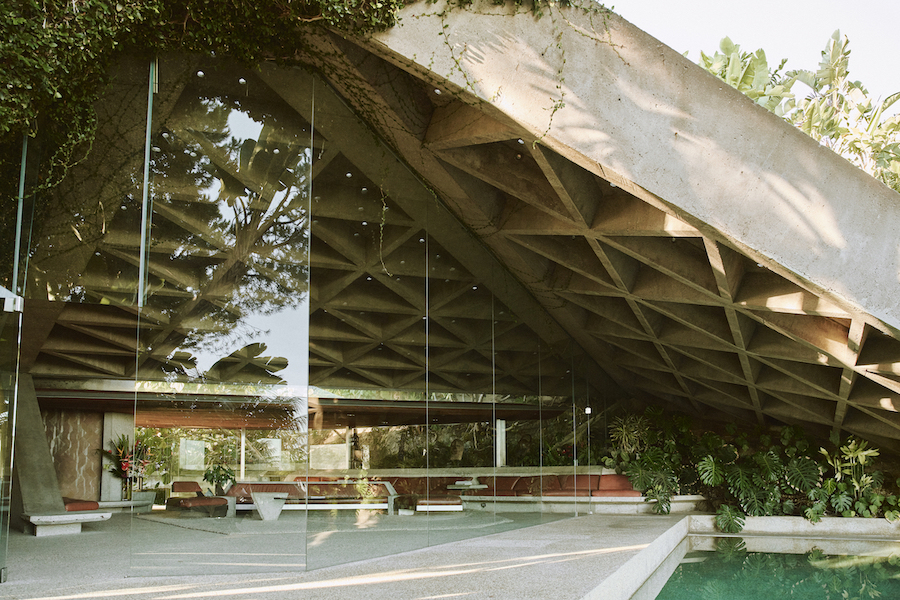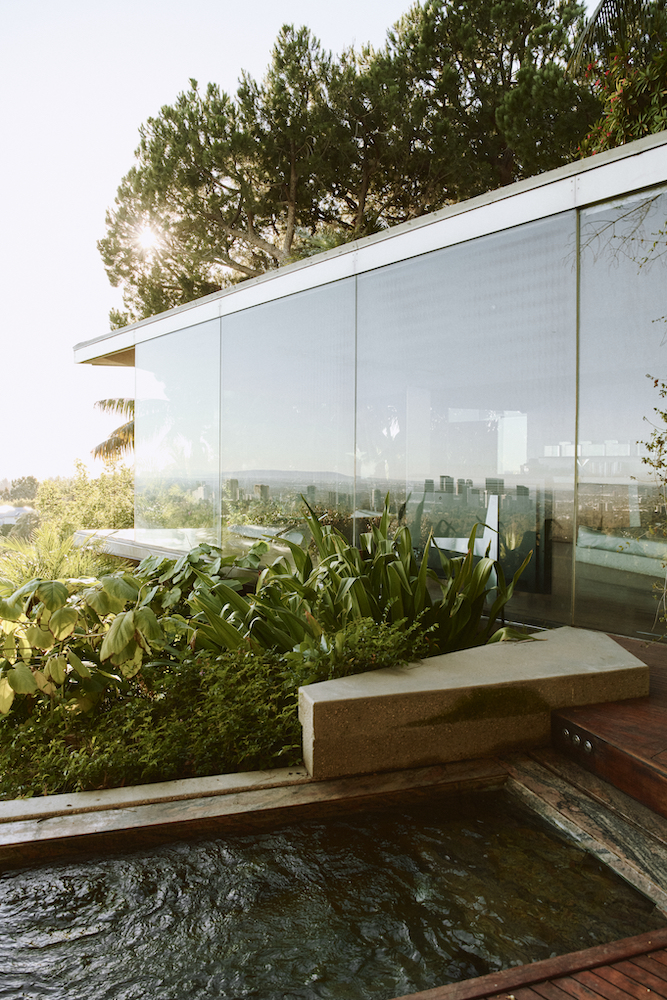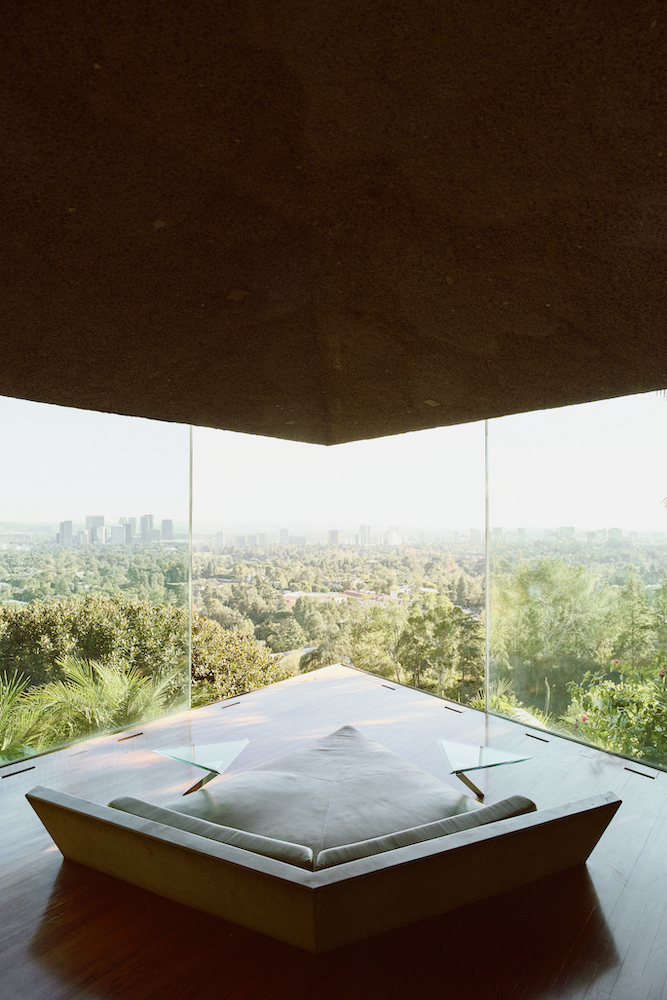Los Angeles in Three Great Houses: Part 3

“Los Angeles in Three Great Houses” continues from last week. This final installment looks at the futuristic house of the city’s most colorful octogenarian:
The Sheats-Goldstein House

It’s the most famous bachelor pad in Los Angeles, a futuristic man cave of concrete and glass tucked into a slope above Beverly Hills. At the push of a button in the master bedroom, sunshades and glass walls slide away to reveal an open-air view stretching from downtown to the ocean. The swimming pool glows at night, and an infinity tennis court appears to hang from the hillside free of gravity, its edge meeting empty space. The property’s private nightclub (yeah, baby!) is a European-style discotheque with pulsing video screens and dance areas and the illuminated city spread out below. Here Rihanna celebrated her birthday with glitterati guests such as Mick Jagger.
Owner James Goldstein is an 81-year-old investor and fashion devotee who favors Galliano and Versace outfits and python-skin hats atop his long white hair. A basketball superfan, he attends 100 Lakers and Clippers games each season, spending $500,000 on tickets and sitting courtside with young models. His house is booked regularly for fashion shoots.
It’s hard to believe that this bachelor hideaway was originally built for a family with children.
In the early 1960s, UCLA professor Paul Sheats and his artist wife Helen commissioned Frank Lloyd Wright disciple John Lautner to design a modern house. By the time Goldstein purchased it in 1972 for $182,000, it needed help (goodbye green shag carpeting!) and reconfiguring to suit its new owner.
Considering his flashy public image, Goldstein is unexpectedly soft-spoken and mannerly in person. He explains that he searched two years until he found a house with notable modern design, a big city view, and room for his dog to run. “The house was in horrible condition and built very cheaply, but the architecture was there. As soon as I walked in, I knew this was it!”
One novel feature was the living room roof. Helen Sheats had told Lautner she loved the feeling of walking through a forest with light coming through the trees. So the architect inserted 750 highball glasses in holes in the concrete roof, and they cast a dancing light, just like she wanted.

Goldstein didn’t make changes right away. “I was young and didn’t really have any money to start improvements.” After seven years, using a fortune reportedly derived from mobile home parks, he brought back John Lautner and started work to improve the house. Goldstein’s first idea was removing the steel dividers between the living room windows because they obstructed the view. “After that, I never stopped,” he says. “Work has been going on here for forty years!”
He also wanted to expand the sense of indoor-outdoor living that’s characteristic of modern architecture. Originally the property had only native brush and a single tree. Today lush tropical foliage covers the hillside. It looks like a jungle, missing only a toucan to hoot a soundtrack.
Goldstein loves the creative process of improving the house. “John Lautner never volunteered suggestions,” he notes. “He always waited to hear from me. Then he’d do some sketches, and we’d go from there.” Their biggest project was the master bedroom, which took four years to redo by combining children’s rooms and a painting studio used by Helen Sheats. Three windows look into the swimming pool; they were originally put in so Helen could keep an eye on the children.
The master bath includes an outdoor shower, a typical Lautner touch. The sink formerly faced a wall, so Goldstein wanted to move it by a window to give him a city view while he brushed his teeth. “I was just envisioning glass above it. Then John said he’d always wanted to do a glass sink!” The result looks like a modern sculpture, pure form and transparency.
Later Goldstein would add the four-acre property’s tennis court, lap pool, nightclub, and a James Turrell “Skyspace” light installation. He sums up the decades of work simply: “It has been an exercise in perfection.” Goldstein has made arrangements to bequeath his house, considered a masterpiece of contemporary architecture, to the Los Angeles County Museum of Art.
Visiting the Sheats-Goldstein House: jamesfgoldstein.com; private residence, LACMA may offer occasional tours.
Jerry Camarillo Dunn, Jr. worked with the National Geographic Society for 35 years. The author of 11 books and 600+ magazine and newspaper pieces, he has won three Lowell Thomas Awards, the “Oscars” of the field, from the Society of American Travel Writers. His “Curious Traveler” column in the Montecito Journal received the SATW gold medal.







